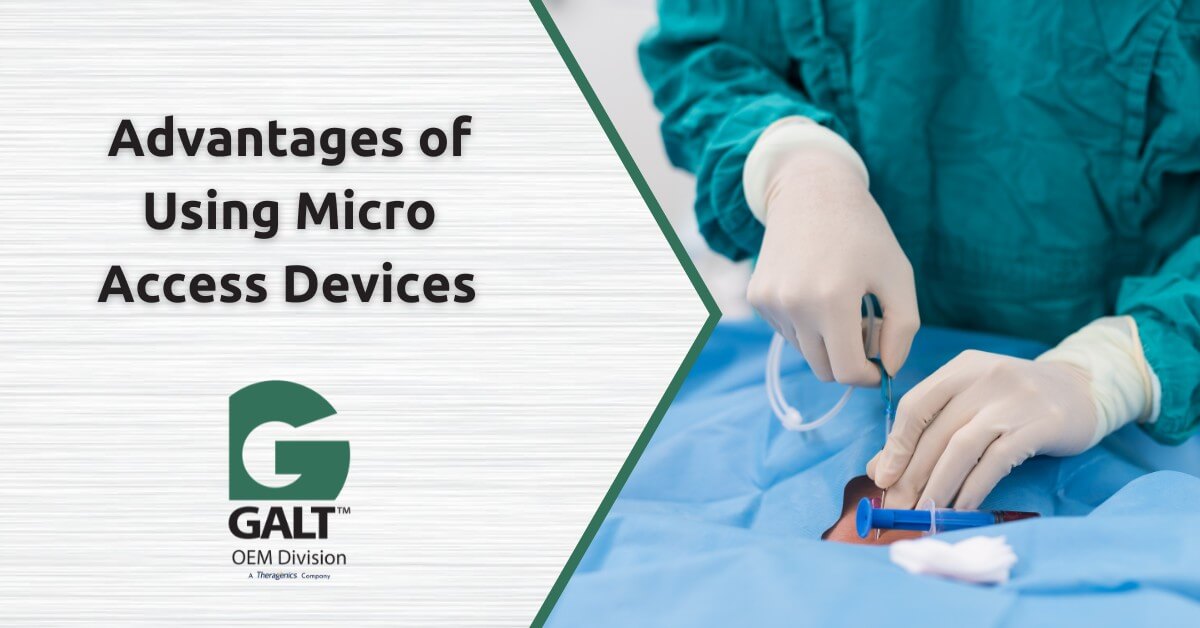The Advantages of Using Micro Access Devices Versus Standard Access

Micro access devices are commonly used for a range of interventional radiology procedures, and they have been for some time. There is also a growing trend in other specialties to adopt micro-access techniques because of the benefits they bring – benefits to both patients and healthcare providers.
Before getting into those benefits, it is useful to define what is considered a micro access device. Here are the main differences between a standard access device and a micro access device.
- Standard access devices use 18-gauge needles and 0.035″ or 0.038″ guidewires.
- Micro access devices use smaller 21-gauge needles and equally smaller 0.018″ guidewires.
As micro access devices are significantly smaller than standard devices, a number of design and performance considerations come into play. When used in the right procedures, though, the benefits are clear.
Applications for Micro Access Devices
Interventional Radiology
- Angiography
- Balloon angioplasty
- Central venous access and PICC line access
- Chemoembolization and embolization
- Hemodialysis access and maintenance
- Stent delivery procedures
- Thrombolysis minimally invasive procedures
- Uterine artery and fibroid embolization
- Varicose vein treatments
- Vena cava filter placement and removal
Interventional Cardiology
- Left and right heart catheter access
- Percutaneous coronary interventions (PCI)
- Coronary angioplasty and stenting
- Device implants
- Electrophysiology (EP) mapping studies
- Radiofrequency ablation
Advantages of Micro Access Devices
Reduced Trauma
The smaller, 21-gauge needle that is common in micro access devices causes less damage when perforating the vessel. Similarly, the guidewires and introducers are smaller, contributing to a less traumatic entry during the procedure and a reduced risk of hematomas.
Fewer Groin and/or Entry Point Complications
There are also fewer complications with micro access devices, including a reduced risk of infection.
Micro access devices are also beneficial in procedures where multiple access attempts are common. This is because bleeding as a result of the access attempt stops sooner. Examples of these procedural situations where multiple access attempts are often necessary include patients that are anticoagulated or obese, and where a precise vascular access point is essential.
Less Painful
Hematomas cause pain and discomfort to patients, and they can increase procedure recovery times. The patient might also have to spend a longer period of time in hospital. As the smaller entry point of micro access devices reduces hematomas, patients experience less pain.
Faster, Less Forceful Entry
The smaller entry size of micro access devices requires less force to gain access to the vessel. The procedure of gaining access can also be completed faster than with traditional methods.
Reduced Costs
When hematomas occur during vascular access procedures using standard 21-gauge needles, the patient might require a unit of blood. This alone increases the cost of the procedure. The procedure itself might also take longer. This again increases costs and can also result in greater pressures on hospital resources, both in terms of facilities and personnel. As mentioned previously, the patient might also have to spend longer in hospital, further increasing costs.
With micro access devices, all the above cost risks are mitigated. The result is often an overall cost reduction for the procedure.
Micro Access Devices from Galt
At Galt, we offer a range of micro access device options depending on your requirements. This includes our Hemostasis Valve Introducers that can be supplied in a kit with an 18-gauge, 7cm needle. The kits also come with both an 0.018″ dilator and an 0.035″ or 0.038″ guidewire. This two-in-one system means you don’t have to open two kits, further streamlining interventional procedures.
Get in touch with us today to find out more about our micro access device solutions.
